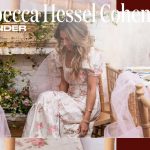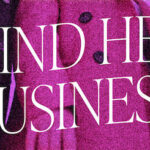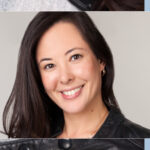Rebecca Hessel Cohen
Founder
-
Mind Her Business

She’s built to frill.
Rebecca Hessel Cohen is the founder of LoveShackFancy, the brand that turned lace trim and floral puff sleeves into a cultural movement. She’s done recent collaborations with Target and Hurley. (And somehow figured out how to make tie-dye crochet?!)
Rebecca called us from Paris to explain how she built her brand, what she thinks of all the knockoffs, and which ‘90s fashion icon inspired her retail strategy.
Every time I read your bio, I think, “This sounds a little like Gossip Girl.” Will you please tell us how you grew up?
I’m from New York City. Born and raised. I lived uptown. I went to an all-girls school for most of my life, and I always had to wear a uniform—these little plaid skirts that I would roll up and up and up. I’ve been a miniskirt girl forever! But I’m not like anyone on TV; my life has been a lot more real. I went to Skidmore College. I wanted to study journalism and art. And I wanted to work at a magazine, just like my mom did. She had been the creative director at Seventeen, so I did grow up in the fashion and beauty world. I remember being 4 or 5 and seeing a fashion shoot for the first time and just flipping out. I was so in love with it. I begged and begged to be an intern, and finally, when I was about to go to college, I interned at Vogue. And I ended up transferring from Skidmore to NYU, because what I was learning as an intern was, to me, the real education.
There’s a perception that if you’re from New York and you live uptown, you’re wearing designer clothes even as a child. Was that your experience?
Not in the slightest. Because I had to wear a uniform, when I could ditch it, I didn’t want to look like anyone else! I loved flea markets and vintage stores. As an adult, I would buy things on sale from Isabel Marant—this is way before her H&M line!—but when I was just developing my style, it was all about these Victorian-style dresses and miniskirts, often from the ‘70s, that I found at vintage stores and flea markets. I would pair these very romantic outfits with, like, Doc Martens or studded boots. And that was a new kind of uniform I had for years.
When did you realize you should be a designer?
It was a slow process. I worked in magazines for a long time—I was in the fashion department at Cosmopolitan for about 8 years. But while I was there, our editor-in-chief, Kate White, would always tease me, because the only fashion shoots I wanted to do were like, “Romance in the garden!” or “Alice in Wonderland party!” My sensibility wasn’t trendy—it was very much what LoveShackFancy is now, super flowy and floral, tons of delicate trims and ribbons, embroidery details. I was never “cool” or “edgy.” I was just me. And then—you’ll laugh—but the reason I started designing was because of my wedding.
Wait—you owe your career to your wedding?
Partly! It sounds ridiculous but it’s true. I couldn’t find any bridesmaid dresses that I liked, so I started acting like a Project Runway contestant. I was going to Mood Fabrics all the time, sourcing different materials, sneaking into the garment district during my lunch break looking for the right seamstress. We ended up with these halter dresses with floral appliques that you could twist and knot in different ways. It was really sexy, but also feminine and romantic. And I kept one and wore it all the time—and my friends who were bridesmaids wore theirs all the time, too! I made a few more that I hand-dyed in my kitchen. I’m not even kidding. People would ask, “Where can I buy that?” so I started selling them out of my house!
How did you make LoveShackFancy a full-time job?
2 people gave me the push I needed. The first was my husband, who said, “Rebecca, you’re working 2 jobs. You can’t keep going like this. Your heart is in this business. Go for it.” The second person who pushed me was Lisa Marie Fernandez, the designer. We were friends through work, and she basically said, “If you don’t do this, it will never exist. How does that feel?” It felt awful. I had to do LoveShackFancy.
Becoming a Cosmo fashion editor is basically the plot of The Bold Type. How do you give up an established “dream job” for something new and untested?
Professionally, it’s the scariest thing. My mom said, “Rebecca, if you do this, you’re giving up your professional standing. You won’t have a big editor title, you won’t have these connections, you won’t be able to call celebrities or models like you can for Cosmo. You’re going to have to start from nothing.” And I felt a little sick because all my best friends came from work. My identity and title came from work. It was my whole life. But ultimately—and this is so cheesy, sorry, but it’s true—you have to do what you know is your future… Also, I left magazines right when bloggers were becoming huge. I could see the industry changing. I wanted to change, too. So I quit. I cried the whole time, but I quit!
What was your big break as a designer?
When I left Cosmo, I started freelancing for fashion brands. I’d work with labels like Sam Edelman on their collections, and then I’d do LoveShackFancy on the side. I thought I’d have this cool indie label that sold in a few small boutiques, and be a freelance stylist for fashion brands, and that would be my balance. But, well, Gwyneth Paltrow got a hold of my lookbook. She was my first “big break.”
Were you friends with Gwyneth?
No! [Laughing.] But I was really lucky. She rented out my in-laws’ house for a photoshoot. It was for [Goop] but that wasn’t a thing yet. My mother-in-law kept my lookbooks on her coffee table as if they were magazines! Her stylist saw them and was like, “Will you bring me this whole collection?” So I’m speeding down the highway out of New York City with a huge bag of all my dresses—my only dresses, really!—and the next week, I got this crazy message saying, “Hi, Gwyneth Paltrow is starting her own company called Goop. She wants to do a special collaboration with LoveShackFancy for the launch.” We did 8 styles together and she was very involved in everything—fabric choice, silhouettes, everything… Everything sold out, and the miniskirt I created for that collection evolved into our all-time best-selling piece, the ruffle miniskirt.
You launched your business right after becoming a mom. How did that influence your leadership style?
The overlap between being a mother and being a new business owner is huge. You’re so excited and so overwhelmed at the same time. You’ve prepared, you’ve researched, but until you’re in it, you have no idea!… Anytime I panicked, I told myself it was my mistakes that would set me up for success. That’s how you grow. Again, I know that’s cheesy, but it’s true. Once you make a mistake as a new business owner, no matter how small, you never do it again! I was also very firm on sticking with my gut.
How?
I remember one of our biggest retailers said, “Can you make us 300 dresses in this print?” I looked at the print and style of dress and said, “You know, that sold very well last year, but this year, we’ve moved on. If we do 300 of these now, nobody will buy them. I know our customer, and she’s got something else on her mind.” The store insisted, bought all these dresses, and of course, what happened? They didn’t sell. That taught me that I couldn’t change the line, or the vision of the line, for anyone.
Did you ever have a Pretty Woman moment, like, “big mistake, huge?”
Ha! Once, a very big department store told me my skirts were too short. They said, “Our customer will never buy a miniskirt like that.” And, well, their customers definitely buy our miniskirts.
You had a Target line last year. How did that impact your business?
I can’t lie; it was huge. We sold out in seconds, even though it hit the Target website at 2 A.M. and it was during the pandemic. But I think having all these beautiful dresses available at a retailer like Target added such a dose of optimism at a time where there was a lot of sadness and anger and anxiety. We had all of these gorgeous women, all so different and so beautiful and so full of life, wearing these dresses.
Precious Lee in the pink dress was so iconic!
Wasn’t it?! And I think the message of the Target collection was, “It’s okay to dream about the simple things, like walking through flowers and having a picnic and feeling pretty if that’s your vibe. This is romance, and this is hope.” So of course it helped with brand exposure so, so much. But it also really tied us, as a brand, to beauty and fun during a hard time. I couldn’t have asked for anything more special and meaningful than that.
How do you handle knockoffs as a fashion brand?
You have to keep moving forward. First, I believe in our quality and our design. Next, I truly think if you love what you make and you believe in what you make, you’ll always be one step ahead of people just going for something ‘trendy.’ Of course you have to pay attention to what sells, but as I’ve seen again and again, what sells is what you love, not what someone in a boardroom says you should love.
Your boutiques are so opulent, they’ve become Instagram destinations. Why make them so extra?
As a kid, I remember walking into Betsey Johnson’s boutiques in New York. It was floor-to-ceiling art and colors and fabrics—it was like Wonderland! It really was. It felt like the best kind of dream world…. So now, I see teenage girls in my stores, and I see them feeling like they’re in a dream world, and it’s great.
What would you say to women who love LoveShackFancy but can’t always afford it?
I think the beauty of LoveShackFancy is that everyone can take inspiration from the styling, from the florals, from the hair ribbons… We are very proud to create beautiful clothes that make people feel fun and fancy and excited. But we’re also creating a world that’s more beautiful and more fun to live in, and it doesn’t matter if you’re shopping vintage or our Hurley collection or Target or what you’ve already got in your closet. There are a million ways to feel fancy and love dressing up!



